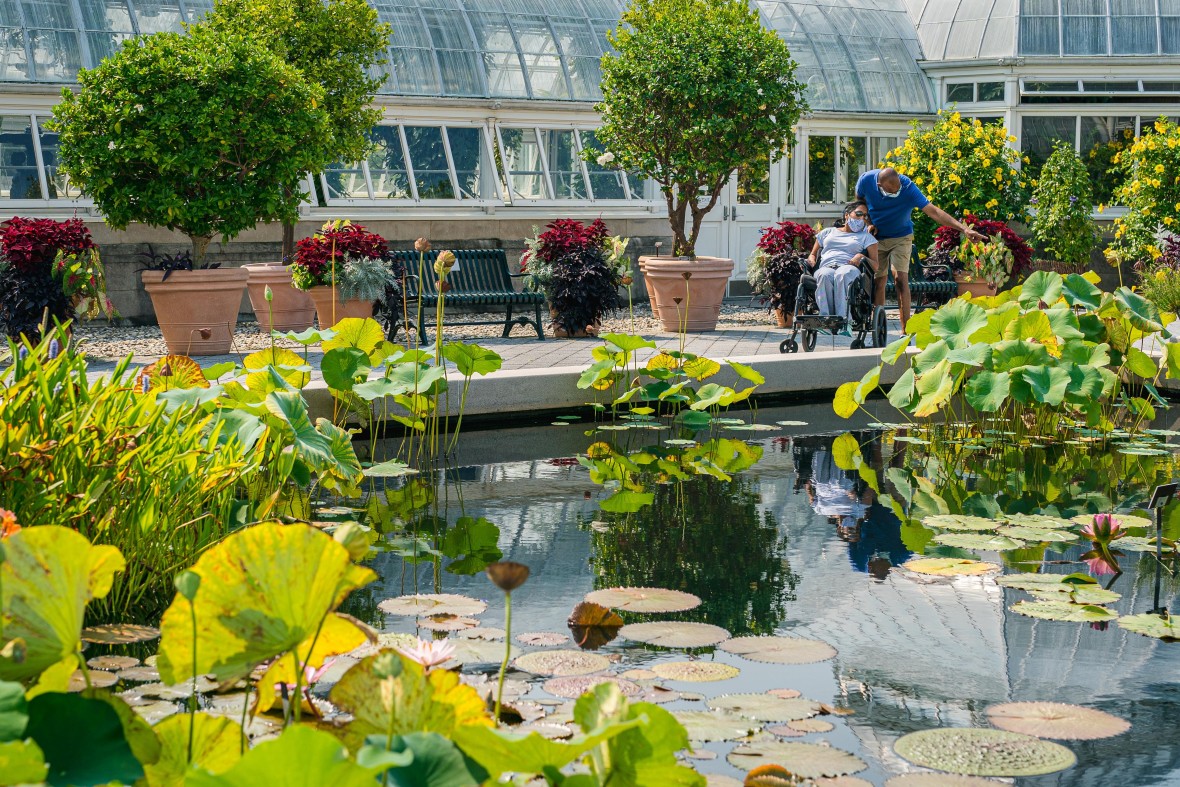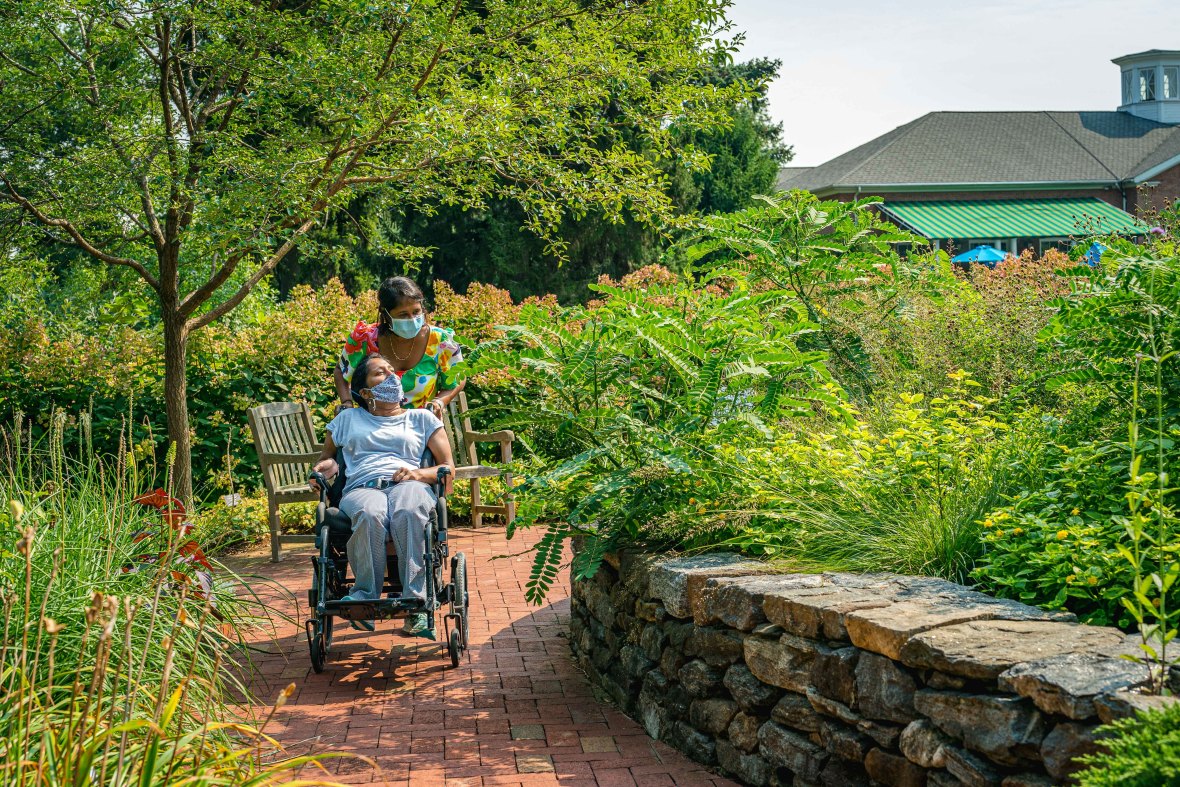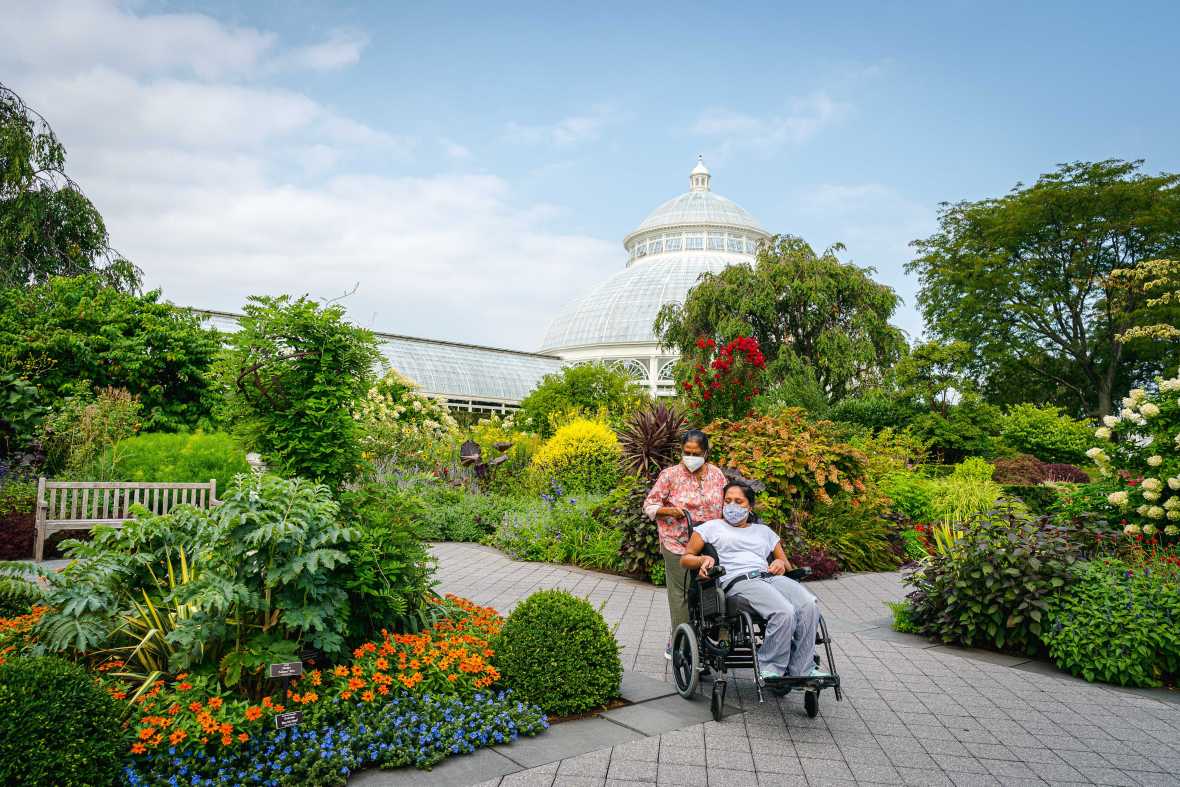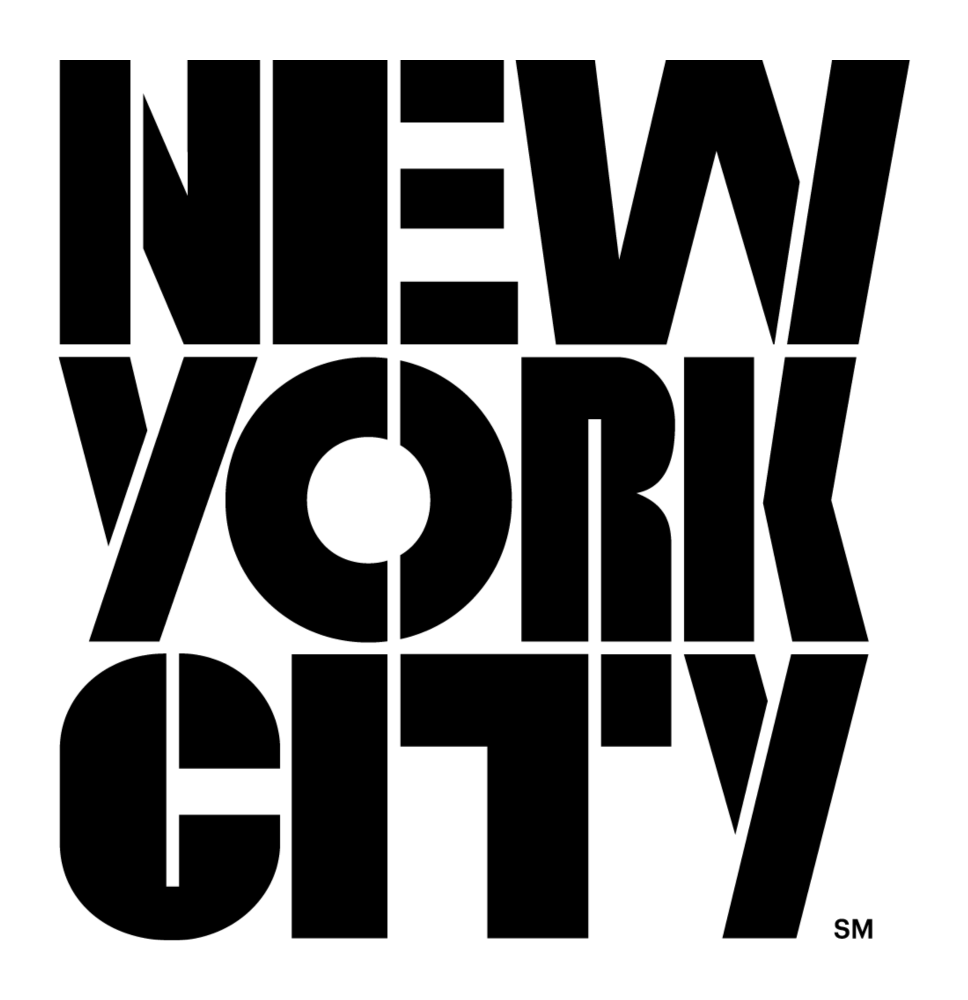The New York Botanical Garden, which first opened in 1891, is one of the largest botanical gardens in the US. A veritable living museum, it’s the site of 250 acres of natural beauty, with over 1 million living plants throughout its indoor and outdoor spaces, which include a temperate glasshouse, lush scenic pathways, meadows and promenades. Aside from plant life, small animals have claimed the Garden as their natural habitat and can be spotted while visiting.
Garden Highlights
There are many highlights, but the Garden is perhaps best known for its prized jewel, the Enid A. Haupt Conservatory, which is the nation’s largest Victorian-style glasshouse. This greenhouse is made up of 11 interconnecting glass pavilions with various balmy, temperate spaces that house rare and near-extinct species. The displays range from a tropical rainforest to a desert-like climate for the cactus collection, with an abundance of colorful orchids and aquatic plants in the pond. During special exhibits such as the Japanese tradition of kiku (chrysthanthemums) and Holiday Train Show in the fall, and the spring Orchid Show, the conservatory’s dome is transformed into mesmerizing displays.

Also on the Garden grounds is the LuEsther T. Mertz Library, just a short walk from the conservatory. The library’s sole focus is to collect and preserve rare works of botany, horticulture and landscape design, which scholars from all over the world travel to see. Completed in 1901, the Renaissance Revival building features an Italian baroque–style Fountain of Life in the front, accentuated by a tree-lined avenue called the Tulip Tree Allée. Special exhibits are occasionally held here and open to the public. NYBG members have book-borrowing privileges.
The meticulously groomed Perennial Garden shows off vibrant palettes of foliage and flowers, all within perfectly manicured borders. Here you’ll also find the Herb Garden, filled with edible and highly fragrant plants. There are lots of colorful butterflies fluttering around.

The Home Gardening Center offers inspiration through occasional classes (open to beginners) and its flower and vegetable gardens. In Helen’s Garden for the Senses, lifted beds allow easy access to flowering plants and herbs. Guests are encouraged to see, smell and even (gently) touch the flowers. There are butterflies, bees and small critters to observe and an abundance of chirping birds.
From May to October in the Rockefeller Rose Garden, over 650 different kinds of aromatic roses are in bloom, each with its own name and story. The rose plants range from some of the oldest roses used by apothecaries for medicinal purposes to recent hybrids which are more resistant to diseases. Lean in for a sniff but expect competition from the nearby bees.
The Edible Academy is an educational and state-of-the-art facility surrounded by the Ruth Rea Howell Vegetable Garden, a large fruit, vegetable and herb garden. Its mission is to inspire a lifelong interest in gardening, environmental stewardship and nutrition awareness through its teaching program, which is open to the public.
Visit the Native Plant Garden to be captivated by a rich landscape that celebrates the beauty of native northeastern North American plants. There are over 100,000 plants to observe, including trees, shrubs, wildflowers, ferns and grasses. A serene pool is the centerpiece. Be on the lookout for squirrels, chipmunks, frogs and colorful birds who’ve made this area their home.

The Mitsubishi Wild Wetland Trail is a freshwater marshy area with wild plants like cattails, sedges and water lilies. You can also spot muskrats, frogs, turtles, snails, dragonflies, butterflies and red-winged blackbirds during the warmer months.
The Goldman Stone Mill, built in 1840 and a National Historic Landmark, is an ideal place to relax. The Bronx River, New York City’s only freshwater river, runs alongside the building. On an autumn afternoon, take in the sounds of the small burbling waterfall against the brilliant backdrop of the Thain Family Forest, which remains the largest uncut expanse of the City’s original topography. Beavers and otters are known to make an appearance here.
The Everett Children’s Adventure Garden has fun-filled opportunities for children of all ages. Through October, delight in the Scarecrows & Pumpkins event, featuring more than 100 silly scarecrows, plus pumpkin-carving demonstrations and spooky Puppets on Parade on weekends. Discover and learn the wonders of plant life in every season. Occasional hands-on activities and educational programs are offered.
Stop by the NYBG Shop on premises before leaving for gifts and souvenirs. Expect to find live plants, a wide selection of horticulture books and trinkets, garden accessories, edibles such as chocolates and local honey, and home decor.
Dining
Hudson Garden Grill is a farm-to-table upscale restaurant serving American food, right on the NYBG grounds. Also on the premises is Pine Tree Café, a casual restaurant with indoor and outdoor seating; it has artisanal sandwiches, pizza, baked items and salads. A family picnic area is available at the Clay Family Picnic Pavilions.
Instagram-Worthy Stops
Picture-perfect spots include the Enid A. Haupt Conservatory, where you can stand under the dome surrounded by orchids and palms or beside the fountain. You can take a photo in the Perennial Garden with the conservatory visible in the background, or snap pics in the Rose Garden surrounded by a symphony of colors. The Goldman Stone Mill, with its waterfall and flourishing landscape, also makes for a great photo op.
Access Information
The large-print map available at the ticket booth (or linked here) shows accessible pathways and should be used as a reference for people with mobility needs as other pathways are steep.
Use the tram transportation to get to farther areas in the gardens. It’s equipped with one wheelchair spot and T-coil compatible induction loop.
Manual wheelchairs are available to borrow on a first-come, first-served basis.
Entrance fee is waived for caretakers of persons with disabilities.
Seating areas are available throughout the park.
There are gender-neutral restrooms in the conservatory and Watson Building.
All restrooms throughout the grounds are wheelchair accessible and equipped with changing tables.
Nursing parents can ask Visitor Services for a private, quiet area.
All ticketing booths are equipped with T-coil compatible induction loops. Additionally, assistive listening devices and T-coil compatible neck loops are available in Ross Hall.
Documented service animals are welcomed.
The Garden’s audio tours are accessible by cell phone via the Bloomberg Connects app.
Large-print and regular-print transcripts of the audio tours are available at the Visitor Center Information Booth.
The Garden’s audio tour “Stimulating Your Senses in the Home Gardening Center” includes visually descriptive commentary designed for the Garden’s visually impaired visitors. Audio tour signage includes braille text.
Wheelchair lifts are located in the conservatory to get to the cactus collection and at the entrance of the Library Building.
A Social Guide can be found here.
For guests requiring a quiet space, inquire with Visitor Services.
Transportation
This cultural gem is located in the heart of the Bronx and is easily reachable by car, public bus and the Metro-North Railroad, which is directly across from the Garden’s Mosholu entrance.
Metro-North
Harlem
Take Metro-North to Botanical Garden station, located directly across the street from the Garden’s Mosholu Entrance
Places Featured
- 1
New York Botanical Garden
2900 Southern Blvd, Bronx, NY 10458, USA




